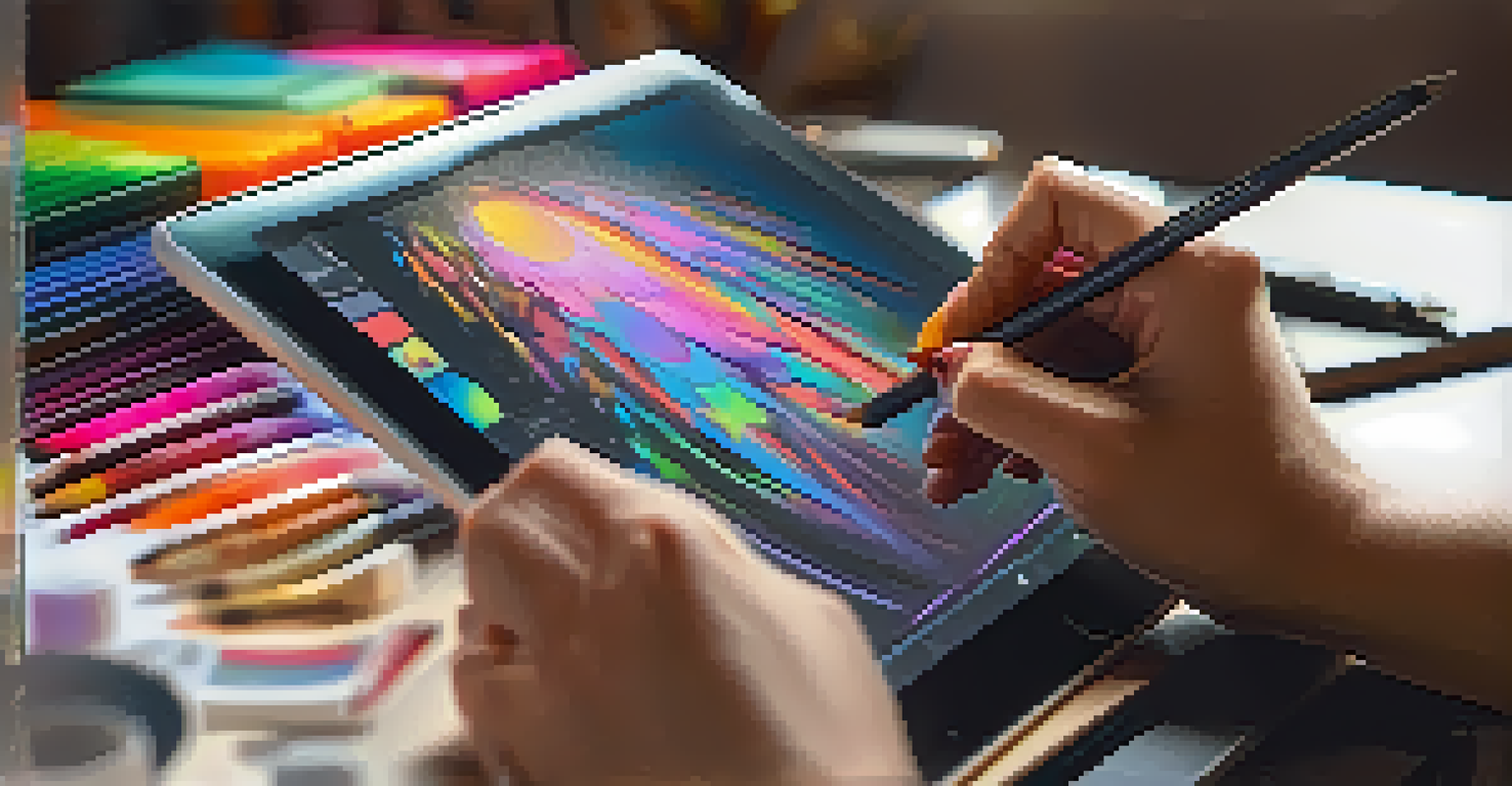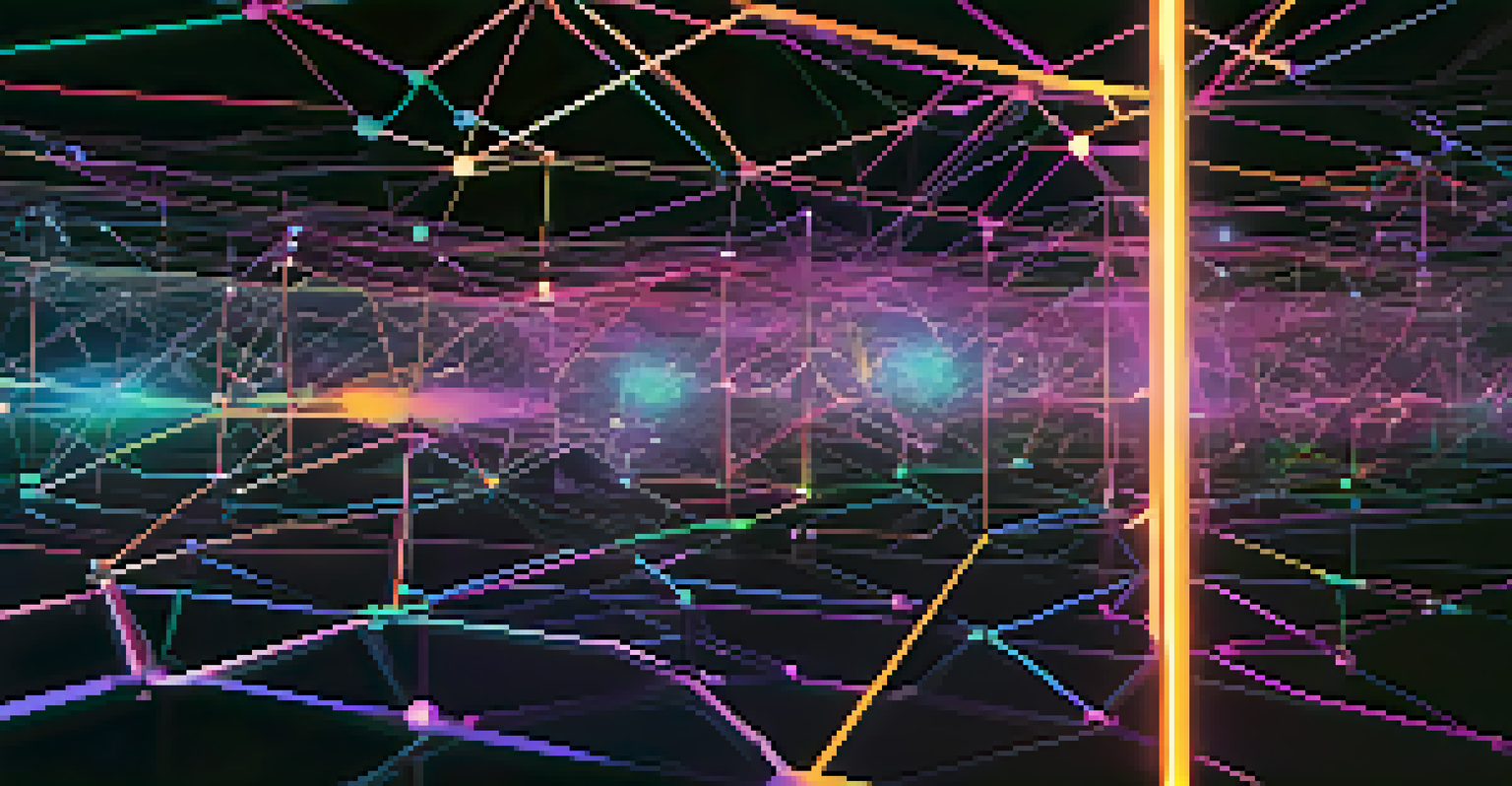NFTs and Fair Use: Navigating Legal Gray Areas

What Are NFTs and Why Do They Matter?
NFTs, or non-fungible tokens, represent unique digital assets on the blockchain. Unlike cryptocurrencies, which are interchangeable, each NFT has distinct properties, making it one-of-a-kind. This uniqueness has sparked a revolution in how we perceive ownership and value in the digital realm, particularly in art and collectibles.
In the digital age, the question of ownership and rights has never been more complex.
The surge of interest in NFTs has not only opened new revenue streams for artists but also raised questions about copyright and intellectual property. Artists can tokenize their work, ensuring they receive royalties for future sales. However, this new landscape is fraught with legal complexities that creators and buyers must navigate.
Understanding NFTs is crucial because they challenge traditional concepts of ownership and usage rights. As this technology evolves, so too does the need for clear legal frameworks that can accommodate these changes. This sets the stage for a deeper exploration of fair use in relation to NFTs.
Understanding Fair Use in the Digital Landscape
Fair use is a legal doctrine that allows limited use of copyrighted material without permission from the rights holder. It's often invoked in contexts like criticism, comment, news reporting, teaching, and research. However, the application of fair use can be murky, especially in the rapidly evolving digital landscape.

In the world of NFTs, fair use becomes even more complicated. For instance, if an artist creates an NFT using another artist's work without permission, they may argue fair use if their piece transforms or comments on the original. But this defense isn’t guaranteed and can lead to legal disputes.
NFTs Redefine Ownership and Value
NFTs challenge traditional views on ownership by representing unique digital assets on the blockchain, particularly influencing art and collectibles.
Navigating these legal waters requires a nuanced understanding of how fair use is interpreted. Factors like the purpose of use, the nature of the original work, and the potential market impact all play critical roles in these determinations. As more creators venture into the NFT space, these considerations become increasingly important.
The Intersection of NFTs and Copyright Law
Copyright law protects original works of authorship, granting creators exclusive rights to use and distribute their work. When it comes to NFTs, the relationship between copyright and ownership can be confusing. Owning an NFT doesn't necessarily mean owning the copyright to the underlying work.
Art is not freedom from discipline, but disciplined freedom.
This distinction is essential because it influences what NFT owners can do with their assets. For example, if an NFT represents a digital artwork, the owner might not have the right to reproduce or sell prints of that artwork unless explicitly granted by the copyright holder. This can lead to misunderstandings and potential legal issues.
Understanding copyright in the context of NFTs is crucial for both creators and buyers. It's vital to clarify rights associated with an NFT at the time of sale to avoid future conflicts. This highlights the need for transparency in NFT transactions, ensuring that all parties are aware of their rights and responsibilities.
Examples of Fair Use in NFT Art
Several high-profile cases have emerged that highlight the tension between NFTs and fair use. For instance, an artist may create a derivative work that comments on or critiques an existing piece, potentially qualifying for fair use. This can be a powerful tool for artists, allowing them to engage with and transform existing works.
However, these examples often lead to legal challenges. When lines blur between inspiration and infringement, artists may find themselves defending their work in court. This underscores the importance of understanding the boundaries of fair use before diving into the NFT market.
Navigating Fair Use Complexities
The application of fair use in the NFT space is complicated, as it raises questions about the transformation and commentary on original works.
Ultimately, these examples serve as cautionary tales for artists and collectors alike. They illustrate the importance of being informed about fair use and copyright when creating or purchasing NFTs. As the market grows, so does the need for clear guidelines and legal protections.
The Role of Licenses in NFT Transactions
Licenses play a crucial role in clarifying rights associated with NFTs. When an artist creates an NFT, they can include a license that outlines what the buyer can and cannot do with the work. This helps mitigate misunderstandings and ensures that both parties are on the same page regarding usage rights.
For example, a license might permit the buyer to display the artwork privately but prohibit commercial use or reproduction. By clearly stating these terms, creators can protect their intellectual property while still providing value to buyers. This makes licenses an essential tool in the NFT space.
As the NFT market continues to evolve, the use of licenses will likely become more standardized. This could help create a more transparent and fair marketplace for both artists and collectors. Understanding how to navigate these licenses will be vital for anyone looking to engage in NFT transactions.
Potential Legal Risks for NFT Creators
Creating and selling NFTs comes with potential legal risks that artists should be aware of. One significant concern is the possibility of copyright infringement if an artist uses someone else's work without permission. This could lead to legal action, damaging both their reputation and finances.
Additionally, the lack of established legal precedents in the NFT space means that creators are treading on uncertain ground. Courts are still figuring out how to apply traditional copyright principles to this new digital medium. This uncertainty can lead to anxiety for creators who want to protect their work.
Importance of Licensing in NFTs
Licenses are essential in NFT transactions to clarify usage rights and protect the intellectual property of creators while providing clear terms for buyers.
To mitigate these risks, artists should conduct thorough research and seek legal advice before launching their NFTs. Understanding copyright laws, fair use, and licensing can help artists make informed decisions and protect their creative endeavors in this exciting but complex landscape.
The Future of NFTs and Fair Use
As NFTs continue to gain popularity, discussions around fair use and copyright will likely evolve. Legal frameworks may adapt to address the unique challenges posed by digital assets, paving the way for clearer guidelines. This could foster a more conducive environment for artists and creators in the NFT space.
Emerging technologies may also play a role in shaping the future of NFTs and fair use. Innovations such as smart contracts can automate licensing agreements, providing clarity and security for artists and buyers alike. This could help establish a more transparent and equitable marketplace for all involved.

Ultimately, the future of NFTs and fair use hinges on a collective understanding of these legal concepts. As more creators and collectors navigate this landscape, ongoing education and dialogue will be essential. By fostering a culture of awareness and respect, the NFT community can thrive while honoring the rights of all artists.